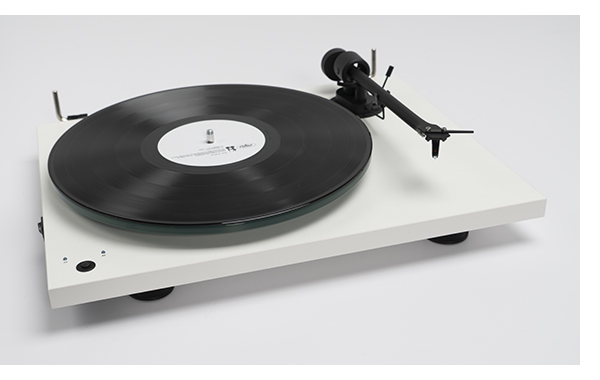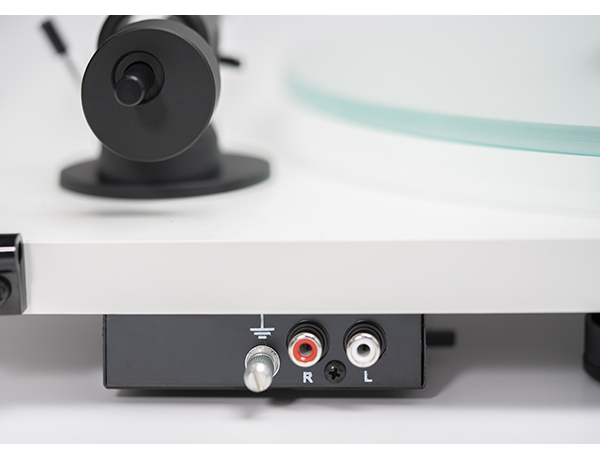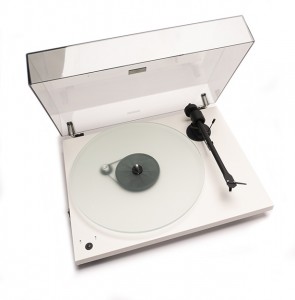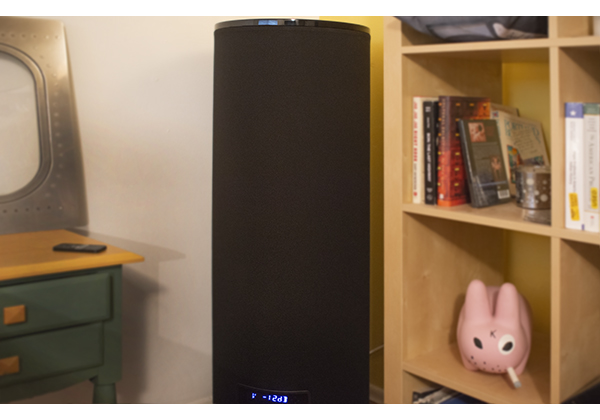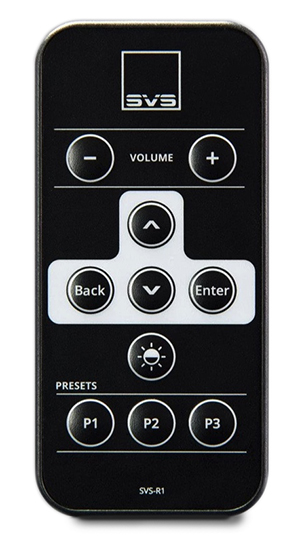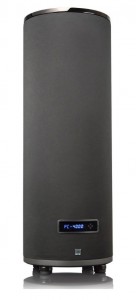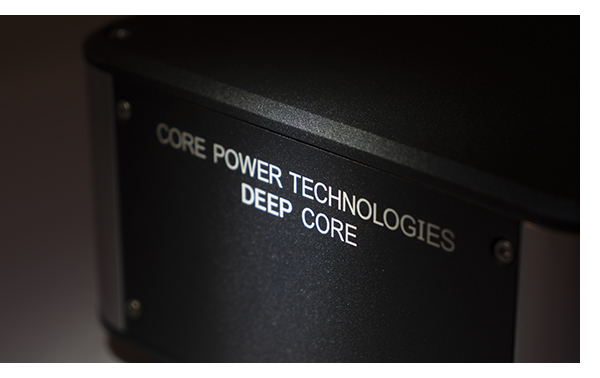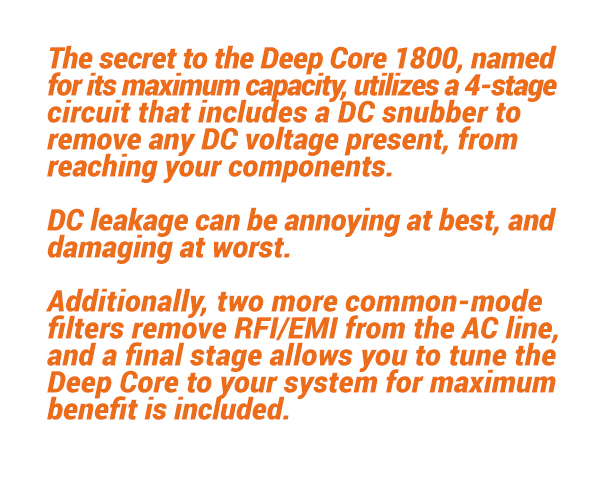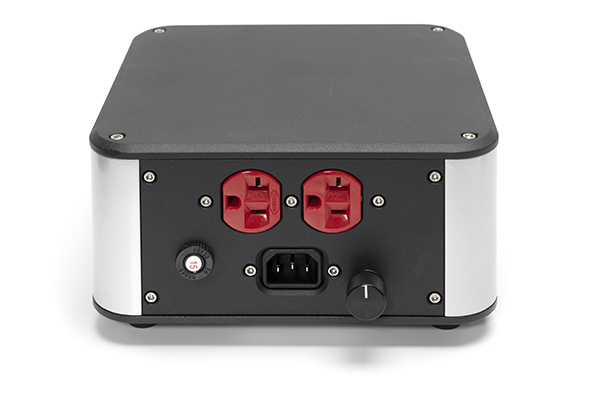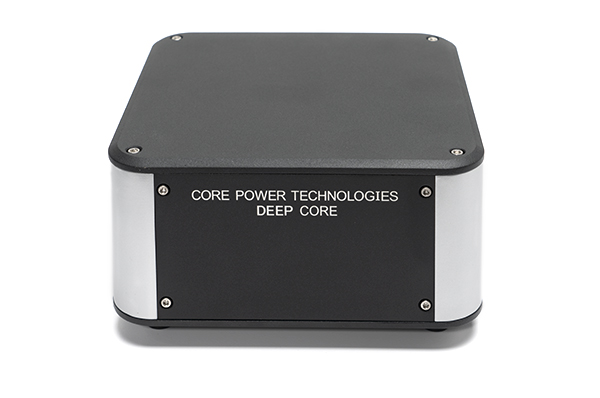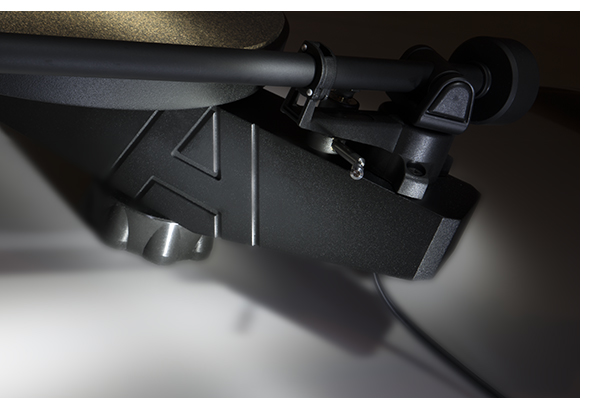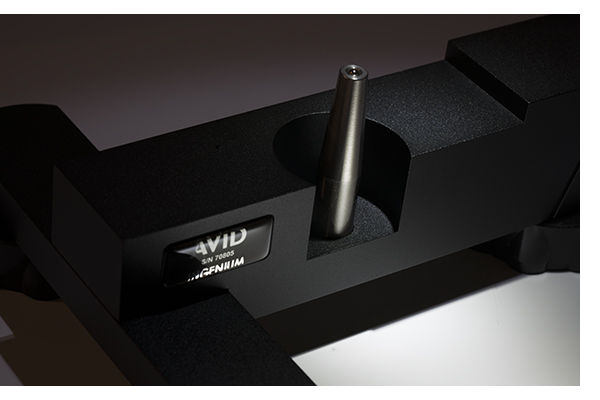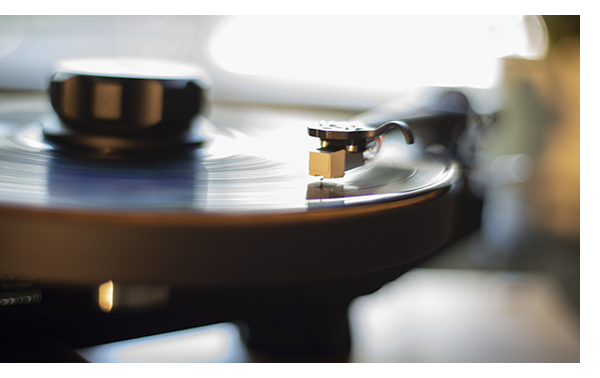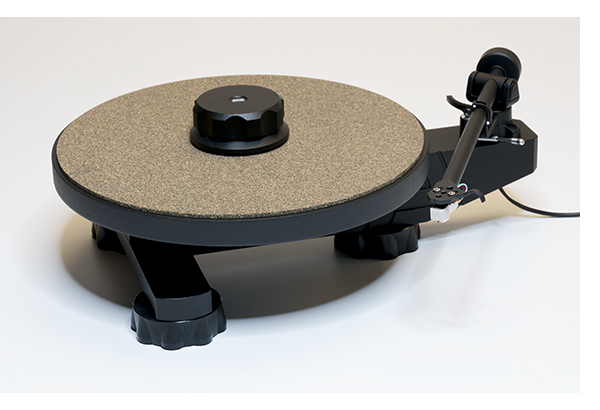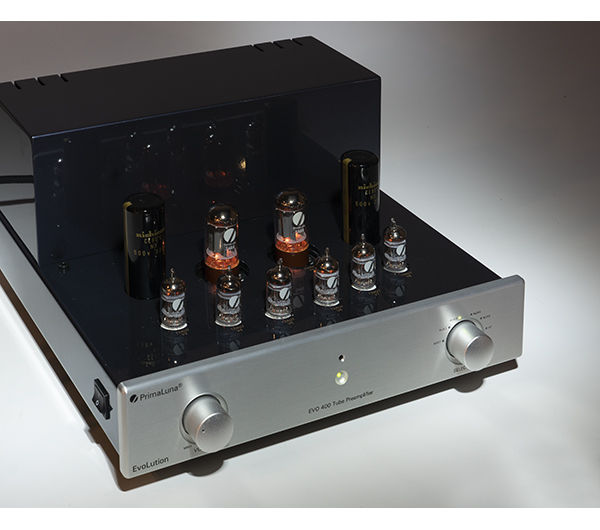 Thirty years ago, I spent $4,500 on an Audio Research SP-11. Think about that for a second. Granted, it had a really good, built-in phonostage, but that was crazy money for a preamp in 1989.
Thirty years ago, I spent $4,500 on an Audio Research SP-11. Think about that for a second. Granted, it had a really good, built-in phonostage, but that was crazy money for a preamp in 1989.
Fortunately, I keep track of nearly everyone that buys my vintage gear as it passes through, and much like vintage cars, I always feel like, with a great piece of equipment like the SP-11, you’re merely taking care of it for the next owner. So, getting it back for a day to listen to what used to be the top of the heap, comparing it to PrimaLuna’s best, was illuminating, to say the least.
Staring down the barrel of 2020, $4,495 for the PrimaLuna EVO 400 has to be the preamplifier bargain of all time. This is a bit of a gray zone, where it’s not inexpensive, but in a world of $100k boutique preamplifiers, very reasonable indeed. More than likely, you’ve got something you’re trading in/up. Hypothetically if you are trading up to an EVO 400 from any $2k preamplifier out there, and you can still get $1,000 for it on the secondary market, you’ll never hear this much of a difference in your hifi system for what it will cost you to trade up to the EVO 400. I can think of several $10k preamplifiers I’d sell for $6k, buy an EVO and take a road trip with the change. Maybe even drive down to see Kevin and take him to lunch.
When PrimaLuna first hit the scene around 2003, their first integrated amplifier struck a delicate balance between new and old, both visually and sonically. It was reasonably priced, but built and finished like components costing far more. This is a trait that has only improved over the years and given PrimaLuna the reputation they now enjoy.
For a while, the naming conventions were a bit confusing, but they have now standardized on the EVO lineup, with 100, 200, 300 and 400 designations of their integrated, pre and power amplifiers. Going up the range, each model reveals more sonically and has additional functionality. This is in part due to a higher concentration of premium parts (wire, resistors, and capacitors) along with a more massive power supply in the EVO 300 and EVO 400 models. Finally, the EVO 400 includes a balanced input and output – a first for PrimaLuna, which makes it able to drive a broader range of power amplifiers. This also allows for using the EVO 400 with some of the world’s finest DAC’s and phono stages that only offer balanced outputs. You can use adapters to achieve your goals, but going straight balanced to balanced, more often than not, provides a little bit more sonic perfection.
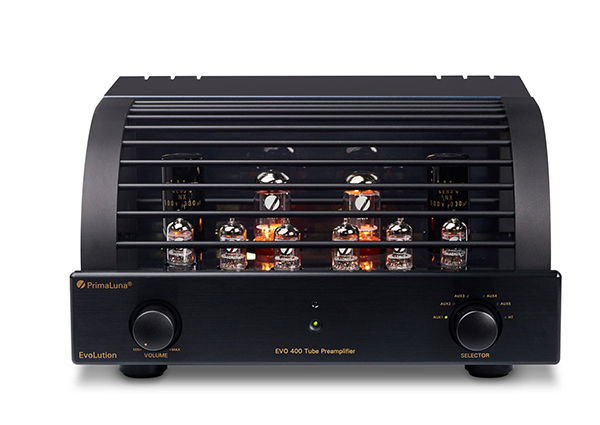 Finally, the EVO 400 is available in a silver or black finish, with a handy, but not overdone remote. We’ve commented in years past on the extraordinary level of finish that PrimaLuna products offer, and the EVO series now has an even more finely machined front panel. The chassis finish remains on par with the world’s finest automobiles. All PrimaLuna components are triple boxed, delicately wrapped, and come with a pair of cotton gloves to help you avoid fingerprints.
Finally, the EVO 400 is available in a silver or black finish, with a handy, but not overdone remote. We’ve commented in years past on the extraordinary level of finish that PrimaLuna products offer, and the EVO series now has an even more finely machined front panel. The chassis finish remains on par with the world’s finest automobiles. All PrimaLuna components are triple boxed, delicately wrapped, and come with a pair of cotton gloves to help you avoid fingerprints.
What’s in a name?
The EVO series is appropriately named. With nearly 20 years of evolution behind them, all the improvements that have been made from generation to generation add up to something truly spectacular. In the past, some have shied away from PrimaLuna because of the lack of balanced input and output. With that hurdle removed, the only thing stopping you is whether you like the aesthetics or not. That’s a personal decision that only you can answer. But like several iconic brands, PrimaLuna maintains a lineage of design that welcomes the new buyer and remains familiar to the legacy customer, so mixing and matching components, should you choose is easy. Before you underestimate this, a quick scan of your favorite audiophile forum or Facebook user group clearly illustrates how many people love having all one brand on their rack.
Which begs the question, when is PrimaLuna going to release a phono preamplifier to go along with their components? Kevin Deal and Herman Van Den Dungen, the guys behind PrimaLuna, are always coy when I’ve brought this up, but maybe one of these days…
Stacking up
As the quality of capacitors under the hood increases, so does break-in time. In the past, most PrimaLuna components have been rocking out of the box, improving a bit over about 50 hours, tops. The new EVO 400 preamplifier, like the EVO 400 power amplifiers, still sound exceptional at first turn on, but it does improve a bit over about 100 hours. So if you love it when you unbox it, you’ll love it even more after about a month of play.
That out of the way, the EVO400 is straightforward. At 52.8 pounds, it’s substantial, so plan where it’s going to go on your rack. This is a reasonably substantial preamplifier, so make sure that your rack or shelving solution has enough heft to hold one of these without issue.
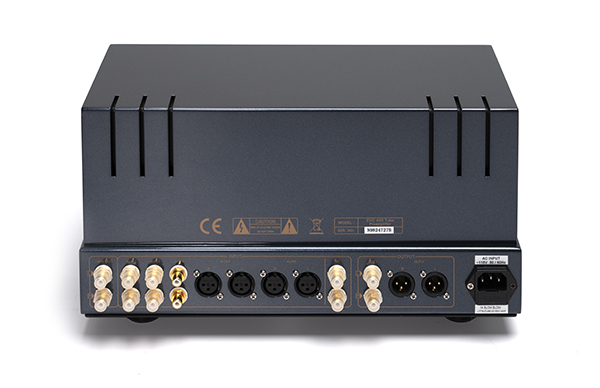 The rest is easy, connect your sources, plug in your power amplifier (s) and start listening. While a pair of EVO 400 power amplifiers (which are now reference components here at TONEAudio) were on hand, serious listening began with Pass XA200.8 amplifiers to get a feel for just what the preamplifier was contributing in a known environment. The dCS Vivaldi ONE was connected via RCA outputs, and the Boulder 508 phono stage was used via balanced outputs, along with a Luxman PD-171 turntable fitted with a Kiseki Purple Heart cartridge (also available from Upscale Audio). Everything was cabled together with Tellurium-Q Reference cable, and a pair of Sonus faber Stradivaris rounded out the system, so the EVO 400 was indeed in good company.
The rest is easy, connect your sources, plug in your power amplifier (s) and start listening. While a pair of EVO 400 power amplifiers (which are now reference components here at TONEAudio) were on hand, serious listening began with Pass XA200.8 amplifiers to get a feel for just what the preamplifier was contributing in a known environment. The dCS Vivaldi ONE was connected via RCA outputs, and the Boulder 508 phono stage was used via balanced outputs, along with a Luxman PD-171 turntable fitted with a Kiseki Purple Heart cartridge (also available from Upscale Audio). Everything was cabled together with Tellurium-Q Reference cable, and a pair of Sonus faber Stradivaris rounded out the system, so the EVO 400 was indeed in good company.
Again, a miracle from PrimaLuna
Taking as much personal bias out of the equation as possible, the EVO 400 preamplifier delivers a level of sonic performance that is not uncommon in preamplifiers in the $10k – $30k range. As this can be hard to quantify, most premium preamplifiers in this price range simply reveal a level of musical nuance that lesser models do not. There is nothing we’ve heard at anywhere near the cost of the EVO 400 that achieves this level of low-level resolution and delicacy, combined with sheer dynamic swing. That’s what you have to write the five-figure check for, as it is with nearly everything.
Adding further to the dynamic prowess of the EVO 400, thanks to its large, dual-mono design and the utilization of three 12AU7 tubes per channel (for maximum current swing), maximum gain is kept to about 10db. This makes for an incredibly quiet preamplifier, and with today’s’ higher output sources and higher gain amplifiers, you don’t really need a ton of gain anyway.
Even in the context of using the EVO 400 with the Pass XA30.8 amplifier and the Pure Audio Project Horns, which have a sensitivity of about 96db, background noise is non-existent, even pressing your ear right up to the horn driver. Dare I say the EVO 400 is nearly solid-state quiet.
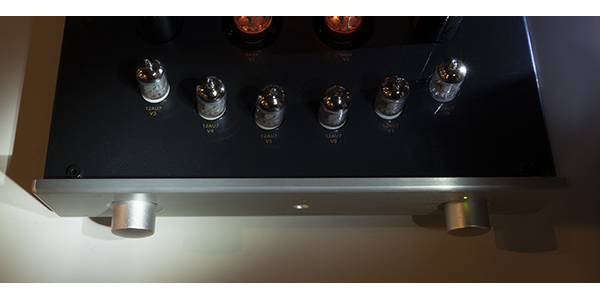 Using the 12AU7 also makes re-tubing simpler and less expensive. Where ultra-premium 12AX7s are getting tougher to come by all the time and pushing the $250-$500 range (each), it’s nice to know that you can re-tube the EVO 400 for the cost of one Telefunken 12AX7. Past experience with PrimaLuna and tube life has always been excellent. Unlike a few current tube brands that run their tubes incredibly hard (requiring new tubes sometimes in the 3000-5000 hour range), I’d be surprised if the EVO 400 needs tubes 10,000 hours down the road.
Using the 12AU7 also makes re-tubing simpler and less expensive. Where ultra-premium 12AX7s are getting tougher to come by all the time and pushing the $250-$500 range (each), it’s nice to know that you can re-tube the EVO 400 for the cost of one Telefunken 12AX7. Past experience with PrimaLuna and tube life has always been excellent. Unlike a few current tube brands that run their tubes incredibly hard (requiring new tubes sometimes in the 3000-5000 hour range), I’d be surprised if the EVO 400 needs tubes 10,000 hours down the road.
You can knock yourself out tube rolling if that’s your hobby, but the EVO 400 sounds fantastic right out of the box with the stock tubes. After doing a little bit of this, it was more of a “different” than “better” experience, yet for some, this will offer the last bit of system fine-tuning that you are looking for. And in some cases, it’s just plain fun. Buy your EVO 400 with an extra set of tubes, and you just might pass it down to one of your family members without needing more.
Kevin Deal is quick to mention that they voice the EVO 400 slightly warm, because “that’s how 90% of our customers like it.” You can swap the center two 12AU7s out to the new, re-issued Mullards ($30 each) for a little more bite. Way easier and more consistent than trying to change tonality with a piece of wire.
The final question
Whether you add an EVO 400 to your system or not will boil down to the final question of whether you like the voicing of this component. Vacuum tube components, more often than not, have a slightly to substantially warmer, more sonically saturated sound than solid-state components. This is usually more associated with an “airier” presentation.
The EVO 400 provides this in abundance. Yet, where some tube components take this to an extreme, where it is so lush and romantic, dynamics and resolution suffer, the EVO 400 is a modern tube preamplifier. Most tube families have their own voice – the 6922/6DJ8 based units have one range of sound, those based on the 6H30 another, and the 12AX7/12AU7 still another. There are even a few designs based on the 300B tube.
Without going into an endless playlist of tracks, the EVO 400 is definitely rich in tonal saturation and contrast without over embellishing. Great recordings sound great, yet mediocre recordings sound pretty good, unlike some overly “tubey” preamplifiers, where everything sounds pretty good, yet nothing sounds brilliant. All of your favorite audiophile clichés apply to the sonic landscape painted by the EVO 400: big, broad, three dimensional. This is that “reach out and touch – it” feeling that tubes accomplish with ease.
The top end is clean, clear, and defined. Cymbals have the right amount of sheen to be believable, yet drums sound dynamic and forceful. The bottom end of the EVO 400 is taut and powerful, but slightly softer than what you’d expect from the world’s finest solid-state preamplifiers – and I’m comparing the EVO 400 to my reference Pass XS Pre and the new Boulder 1000 series. ($38,000 and $21,000 respectively)
A ten minute listen with three of your favorite tracks is all you need to see how much performance is packed into the EVO 400 preamplifier, whether it’s at the dealer or in your home system. I think those downsizing from a six-figure system that doesn’t want to give up the performance, or the audiophile on the way up, wanting six-figure system sound, but doesn’t quite have that budget will be equally impressed with this preamplifier. I’d even say that for 95% of you, the EVO 400 could be your destination preamplifier. Period…
High-performance audio is always so much more than wires, tubes, and specs. It’s about emotion and how close a component can bring you to what your idea of musical bliss is. You truly need to experience an EVO 400 to believe it. This is one of the world’s finest vacuum tube preamplifiers at any price. That you can have one for $4,495 is pretty cool. That’s why the PrimaLuna EVO 400 is our Product of the Year in the preamplifier of the Year category.
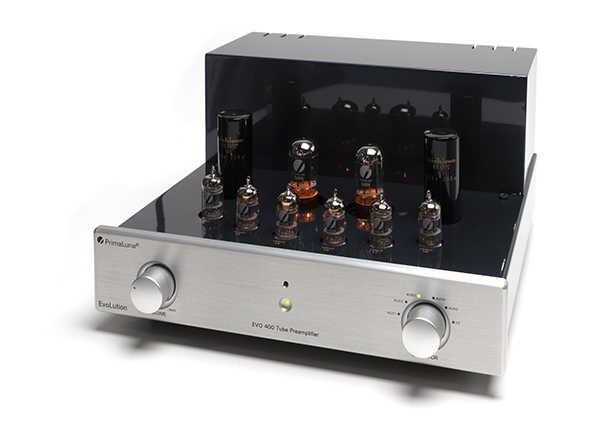 The PrimaLuna EVO 400 Preamplifier
The PrimaLuna EVO 400 Preamplifier
$4,495
www.primaluna-usa.com
Peripherals
Analog source AVID Volvere SP/Kiseki Purple Heart/Luxman EQ-500
Digital source dCS Vivaldi ONE
Power amplifiers Pass XA200.8 monos, PrimaLuna EVO 400s, Audio Research REF160M
Cable Cardas Clear
Speakers Focal Stella Utopia








